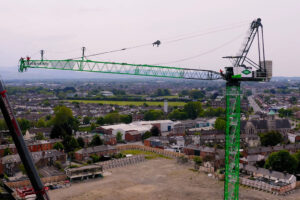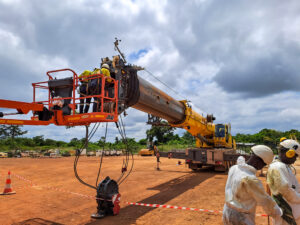Bush and Burchett Inc. was contracted to built the Pond Creek Bridge on US460 in Pike County, Kentucky, the tallest bridge in the Bluegrass State and one of the tallest traffic bridges in the country. The rugged terrain of the project site and the bridge’s height of 324 feet created unique challenges for the construction project.
According to Paul Burchett, co-founder of Bush & Burchett, “Being 320’ tall and only 1000’ long, the slopes on each side of the bridge were extremely steep. This made conventional erection almost impossible.” The contractor determined the safest and most economical strategy was to build the steel bridge on the embankment and incrementally move the girders into position on the eight sets of piers. The contractors partnered with Engineered Rigging for this segment of the bridge construction.
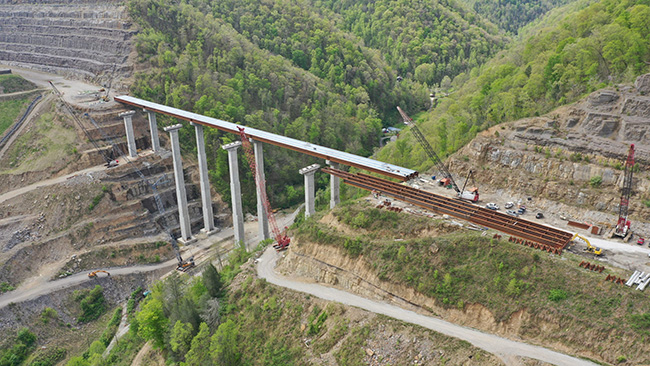
The equipment utilized included two 70-ton strand jack rentals (models HSL7006), a SLPP7E strand jack pump, strand guide, strand recoiler, gold box, a laptop and industrial Hilman rollers. In addition to fulfilling the construction equipment rental, Engineered Rigging provided an on-site technician to operate the strand jack system. As construction of one section of girders was completed in the launch bay, the strand jack system was used to pull it onto the bridge pier, thus allowing the next section of the bridge to be constructed on the embankment.
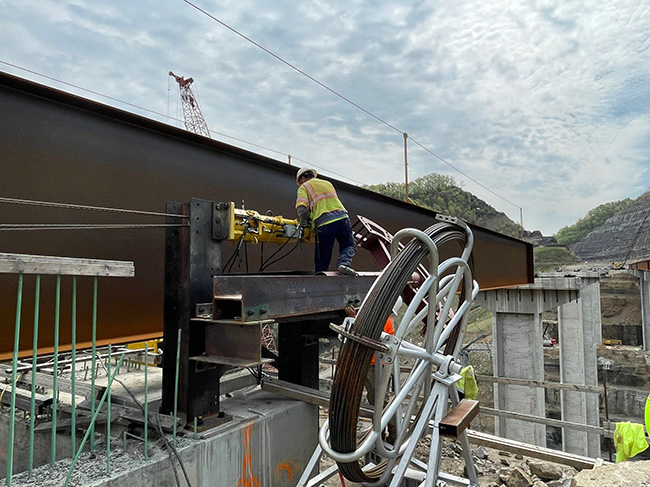
In total, 10 jacking evolutions are necessary to pull the entire bridge into position of which 8 are currently complete. The pulling weight for the first pull was approximately 16,000 lbs, and the bridge became heavier with each subsequent pull, the heaviest reaching 80,000 lbs. Pulling force is a function of how easily the bridge slides on the Hilman rollers and the dead weight of the steel span.
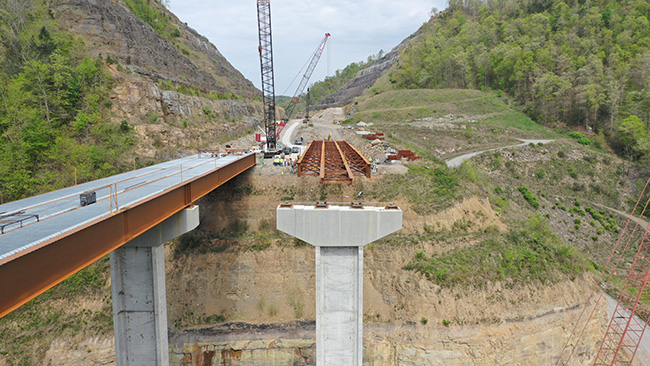
According to Burchett, “The launch went as well as we could have imagined. We encountered a few challenges during the launch related to the small margin for tolerances. On the piers, we only had about a half inch tolerance with each gap. Any lateral movement of the girders or minimal inconsistencies in fabrication of the girders or rollers led to rollers not lining up with the gap in the splice plates. While this caused a bit of a delay on the eastbound launch, we modified the splice plates on the westbound bridge that helped reduce the frequency of these issues.“
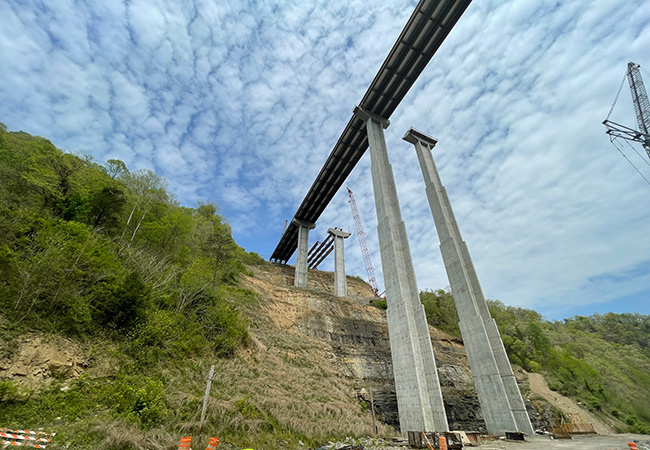
Once the launching of the bridge was complete, the bridge was lifted off the Hilman rollers to allow the bridge to sit on its bearings. This step of the bridge construction process used additional Engineered Rigging heavy lifting equipment rentals including one SFP421SJ split flow pump, hydraulic hoses, four LPL1602 locking pancake jacks (160-ton lifting capacity each), and four HCL1006 100- ton locknut cylinders.



